Due to frequent turbulence and the difficulty of finding emergency landing spots, pilots often avoid flying over mountainous regions like Tibet.
According to statistics from 2017, there are over 100,000 commercial flights on Earth each day. Typically, based on an average flight duration of two hours per flight, there are more than 10,000 commercial aircraft in the sky at any given moment.
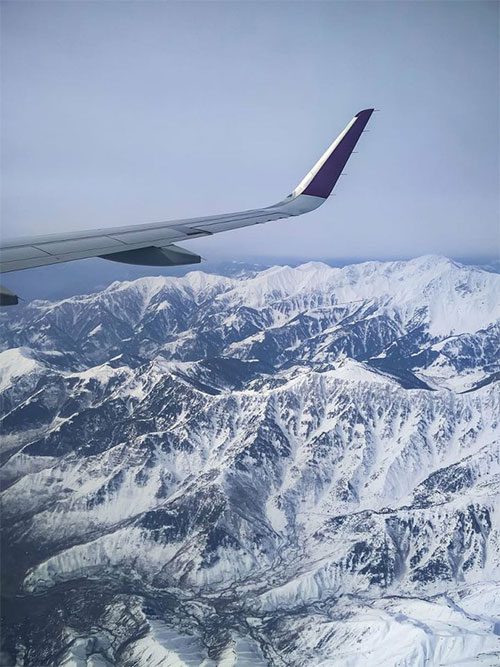
There are over 10,000 commercial airplanes flying in the sky every day.
Although there are many airplanes in the sky, if you could observe these flights from space, you would see that there are basically no planes flying over certain locations on Earth, such as Antarctica and the Himalayas. Antarctica is relatively understandable; it is uninhabited and not an appealing destination for flights. However, it is puzzling why no aircraft fly over the Himalayas.
Despite having sparsely populated areas, the surrounding regions are extremely densely populated. So why don’t commercial flights traverse this area?
The Himalayas stretch approximately 2,400 km from east to west and 200 to 300 km from north to south, with an average height exceeding 6,000 meters. The highest peak, Mount Everest, reaches 8,848 meters, and there are over 100 peaks above 7,200 meters. This means that most commercial airplanes can comfortably fly over this region, as the ideal cruising altitude for passenger aircraft is between 10,000 and 12,800 meters.
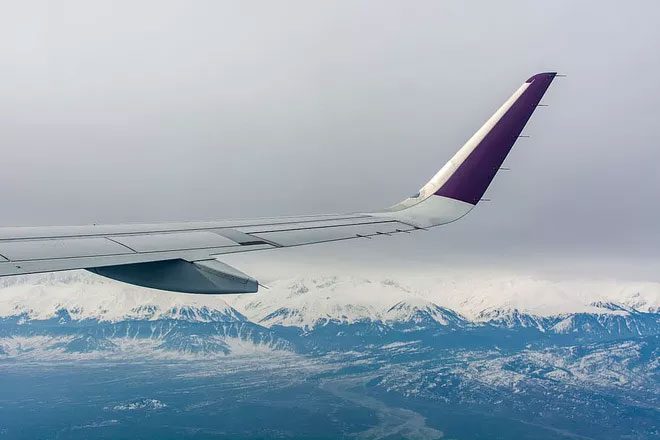
The highest peak of Mount Everest is 8,848 meters with over 100 peaks above 7,200 meters.
The record altitude reached by a jet aircraft is 37,648 meters, achieved by Alexandr Fedotov in 1997 on a MiG-25M.
However, in reality, it is very rare for commercial flights to fly over this mountain range, and the main reason is safety concerns.
First, in the event of a decompression incident, planes need to descend quickly to a safe altitude below 3,000 meters to manage the situation. Additionally, engine failures also require descent below 3,000 meters to ensure normal engine operation. Meanwhile, the average altitude of the Himalayas is 6,000 meters, which means that in the event of such incidents, an aircraft flying over the Himalayas would certainly collide.

In the event of an incident, descending altitude while flying over the Himalayas would certainly lead to collisions.
Second, the Himalayas feature a variety of terrain but are mostly not flat. There are only two “decent” airports in this area; Lhasa Airport has a runway of 4,000 meters, and Kathmandu Airport has a runway of 335 meters. In emergency situations where a landing is required, commercial aircraft would certainly not be able to land here. Commercial aircraft typically fly at an ideal altitude of around 10,000 meters and also require a flat area of at least 10,000 meters to glide down slowly before touching the ground. In the Himalayas, planes wanting to land can only glide for about 1,000 meters, which makes accidents inevitable.
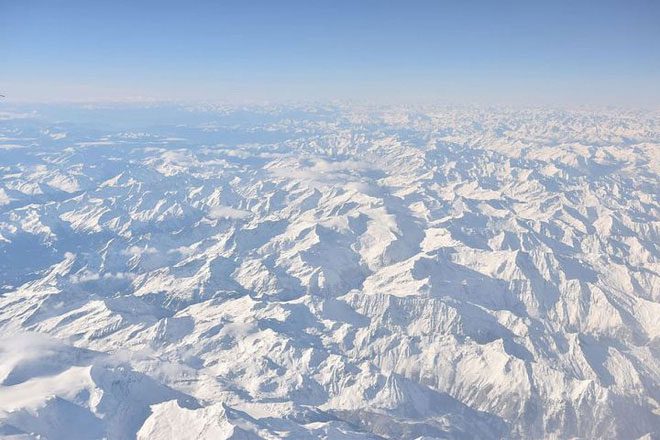
The Himalayas feature a variety of terrain but are mostly not flat.
Third, the turbulence in the Himalayas is also a significant issue. There is very little pollution near the Himalayas, which makes atmospheric turbulence very pronounced. However, when flying through this region, it is challenging for radar to detect these disturbances, making it difficult for pilots to notice them. Thus, aircraft are more likely to encounter turbulent zones, which can cause injuries to crew members and passengers.
Turbulence is the disruption of airflow, similar to the movement of waves and currents at sea. If there are no obstacles in the way of the wave, it will flow smoothly. However, if it strikes a breakwater, it will break apart, according to Darren Ansell, head of the Aerospace and Aviation Engineering Department at the University of Central Lancashire.
“When air flows over artificial structures and natural terrain like mountains, the airflow is disrupted, causing the air above and around it to become chaotic. If taking off or landing from an airport near a mountain range or hilly area, you are likely to experience this type of turbulence throughout the take-off process and shortly after,” Ansell explains.
According to a report from the FAA, air turbulence is the leading cause of non-fatal aircraft accidents.
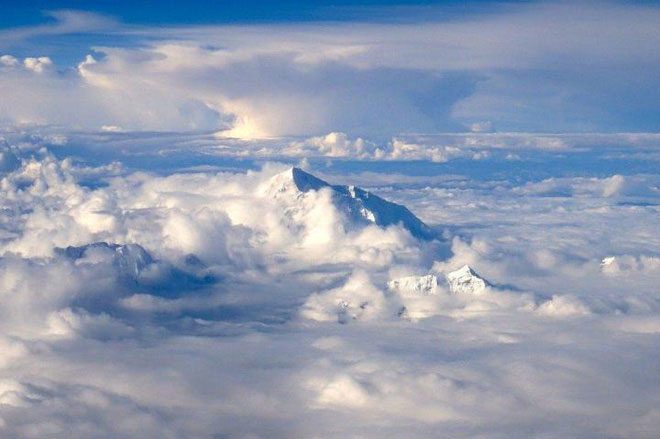
Atmospheric turbulence in the Himalayas is very pronounced.
Fourth is the issue of fuel freezing. Jet fuel can freeze at -47 degrees, and flying at high altitudes over the Himalayas for extended periods increases the risk of fuel freezing. Aircraft typically choose to descend to avoid this issue. However, how can one descend over the Himalayas?
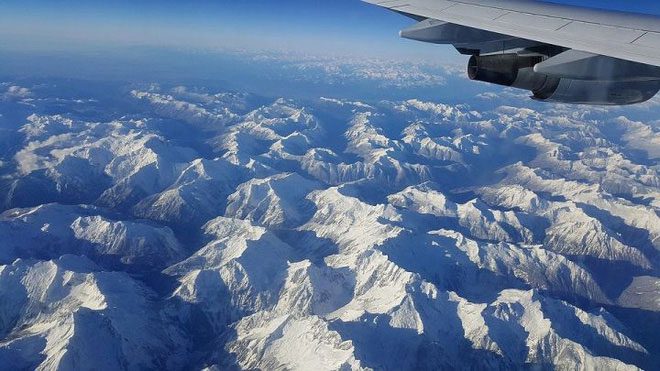
Flying over the Himalayas makes it difficult to descend.
The vast size, enormous altitude range, and complex terrain of the Himalayas mean that this mountain range has various climates, from humid subtropical at the foothills to dry, cold desert conditions in the Tibetan region of the mountains. For most of the Himalayas, particularly in the southern parts of the high peaks, except for the far west, the most characteristic climate feature is the monsoon. Heavy rains occur during the southwest monsoon from June to September. The monsoon can severely impact transportation and cause significant landslides.
Therefore, the primary reason that aircraft rarely fly over the Himalayas is that the safety risks are significantly greater than in other areas.
Commercial aircraft typically travel most of the distance at altitudes above 10,000 meters. One of the main reasons for this is that the higher one goes, the thinner the air becomes, allowing the aircraft to move more easily, faster, and consume less energy, ultimately saving more money.
The ideal altitude for passenger aircraft is between 10,000 and 12,800 meters. If an aircraft flies too high, the oxygen concentration in the air will be too low, making it difficult to ignite the engines, but flying too low increases air resistance.
When issues arise with an aircraft at 10,000 meters, such as engine failure, pilots have more time to manage the situation than if the aircraft were at just 3,000 meters. An aircraft can still land safely even with both engines out. Therefore, having time to prepare and execute this can save many lives.
Due to the lack of areas for emergency landings, aircraft will avoid flying over Tibet.


















































